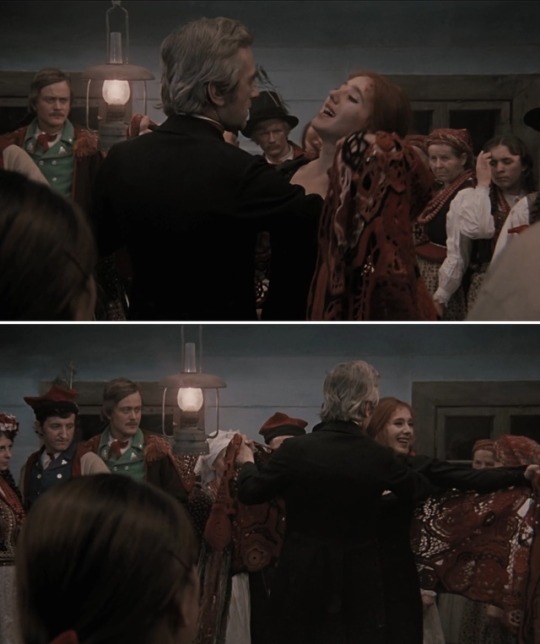#wesele 1973
Text







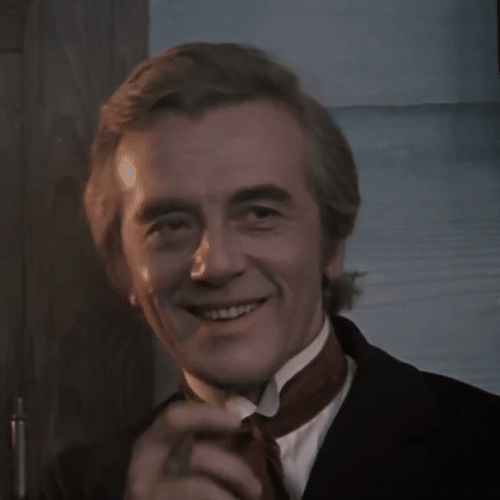

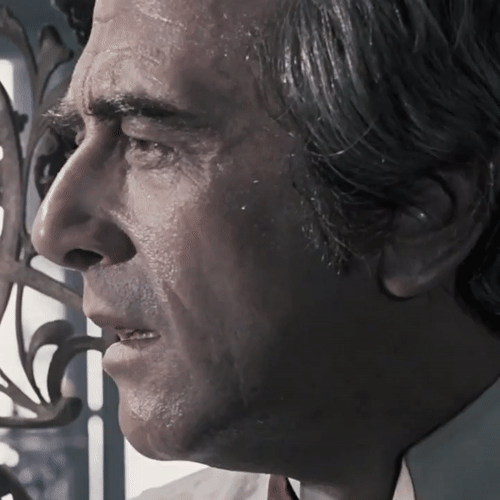
Poeta // Wesele (1973)
część II
#poeta#wesele#stanisław wyspiański#wesele 1973#andrzej wajda#kazimierz przerwa tetmajer#młoda polska#polska literatura#pollit#polski film#andrzej łapicki#gucio gifs
52 notes
·
View notes
Text
I cóz za tako nauka? Serce!?
A to Polska właśnie.

7 notes
·
View notes
Text

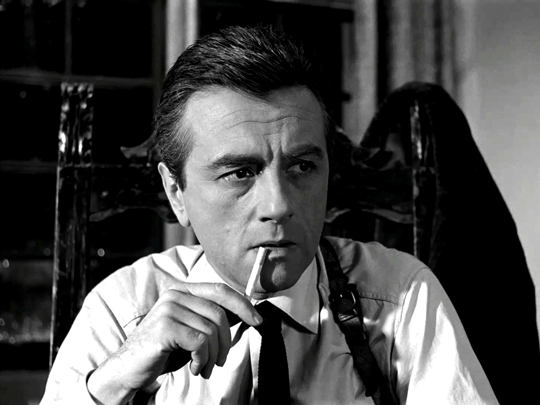





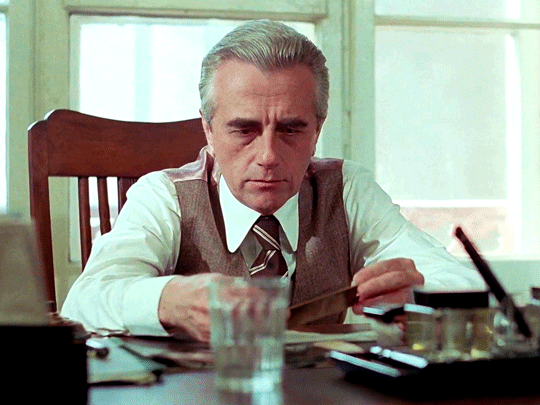
Andrzej Łapicki (ur. 11 listopada 1924)
Lekarstwo na miłość (1965)
Gdzie jest trzeci król? (1966)
Poczmistrz (1967)
Lalka (1968)
Przygody pana Michała (1969)
Wesele (1972)
Zazdrość i medycyna (1973)
Sprawa Gorgonowej (1977)
#andrzej łapicki#uczucia jakimi darze tego człowieka są nie do wysłowienia#wszystkiego najlepszego#setna rocznica urodzin dopiero za rok#ale kto mi zakaże świętować też 99#dobór filmów na podstawie tego co znam oraz co jest dostępne w dobrej jakości#za rok mogę zrobić z innymi filmami#polskaverse#lekarstwo na miłość#gdzie jest trzeci król#poczmistrz#lalka#przygody pana michała#wesele#zazdrość i medycyna#sprawa gorgonowej
77 notes
·
View notes
Text


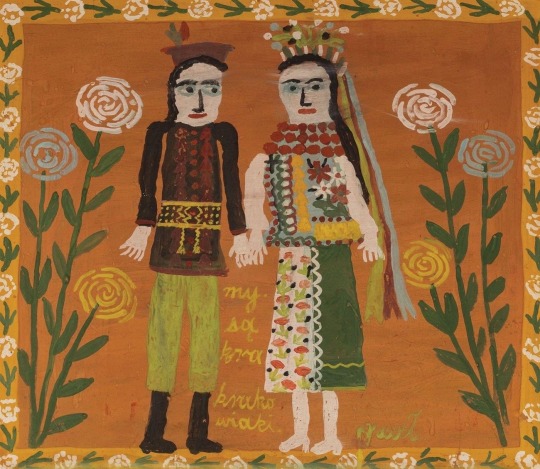
1. Katarzyna Gawłowa, l. 70 XX w., fot. Jacek Łoziński, Instytut Sztuki PAN
2. Katarzyna Gawłowa „Para w strojach krakowskich”, niedat., gwasz, papier, płyta pilśniowa
3. Katarzyna Gawłowa „Ostatnia wieczerza”, niedat., gwasz, papier, płyta pilśniowa
Katarzyna Gawłowa - malarka wychowana w zgodzie z tradycjami ludowymi
🔹 Już w dzieciństwie bardzo lubiła malować, ale musiała pomagać rodzicom i ze względu na codzienne obowiązki nie mogła poświęcić się pasji utożsamianej z beztroską, na którą nie było miejsca w ubogiej chłopskiej rodzinie.
🔹 ,,Legalnie’’ malowała, pomagając matce w strojeniu izb, przed świętami bieliła chatę oraz ozdabiała ją wzorami przy pomocy wałka i szablonów z postaciami świętych.
🔹 Gdy jej rodzice kładli się spać Katarzyna po kryjomu stroiła dom po swojemu. Na ścianach pojawiały się kwiaty, rośliny, zwierzęta oraz święci.
🔹 Malowanie „na serio” zaczęło się w 1973 roku, gdy dwaj „panowie z Krakowa” przyjechali, by odkupić od niej skrzynię posagową. Zobaczywszy jej dzieła na ścianie, namówili ją, by malowała na tekturze i płycie – obiecali farby, dzięki którym mogła zrealizować ich zamówienie.
🔹 W roku 1977 Muzeum Etnograficzne w Krakowie zorganizowało malarce wystawę – przyszła na nią ubrana w tradycyjny strój krakowski, odświętnie, jak na wesele, bo w ten sposób rozumiała wernisaż i chciała go właściwie celebrować.
🔹 Tematem jej dzieł były wątki ludowe oraz sakralne. Swoje prace, malowane intensywnymi barwami, obwodziła kwiecistymi ramami, które dopełniały całości.
Całość via Muzeum Śląskie @folkmania
#Katarzyna Gawłowa#malarka ludowa#malarka#art by women#sztuka kobiet#malarstwo#sztuka#sztuka ludowa#folkmania#folk inspired
3 notes
·
View notes
Photo

Films seen in 2018
# 215 - Wesele (Andrzej Wajda, 1973)
#wesele#the wedding#andrzej wajda#marek walczewski#ewa zietek#daniel olbrychski#emilia krakowska#mieczyslaw stoor#film#films in 2018#movie#cadwalladery#films seen in 2018
3 notes
·
View notes
Text
Cub Scouting Background
Every now and then it’s fun to crack open some of the Scouting books from years past.
Found in the 1973 printing of the Cubmaster’s Packbook, we read on pages 192-195 about some background of how the Cub Scouting program started.
The Cub Scout program of the Boy Scouts of America was carefully built as a direct answer to the demands of millions of boys of Cub Scout age and their parents, who as early as 1911 were calling for their own program.
Wolf Cubbing started in England in 1914 when Baden-Powell began experimenting with a program for younger boys, based on Kipling's The Jungle Book. In 1916 he made a public announcement of this program, and since that time it has spread with very little change into the other European countries.
At the First National Training Conference of American Scout Executives in 1920, the needs of the young boys were emphasized, but the Boy Scouts of America felt it wise to defer action until there was more objective evidence. In 1925, Dr H.W. Hurt, a research psychologist, was authorized to study what was already being done in the way of a suitable program for younger boys and to explore general interest at various age levels. His recommendation indicated that boys 9, 10, and 11 responded even better to leadership and program efforts than older boys. ( At that time, boys had to be 12 to enter boy scouting.)
In 1926 the executive board authorized the Chief Scout Executive to proceed with a plan for raising $50,000 for a thorough scientific study of the whole younger boy matter. In 1927 an advisory committee was appointed, composed of top specialists in the fields of child psychology, family life, etc, to cooperate with the Boy Scouts of America in developing this program. At this time the Laura Spelman Rockefeller Foundation made available the $50,000 necessary to carry on the basic study, develop a plan, and produce the necessary literature.
In addition to the committee's already mentioned, advice was sought of various steps in the building of the program for more than 13,500 leading psychologists, sociologists, teachers, school superintendents, professors of education, college executives, and recreation and welfare directors.
The Executive Board approved a plan of experimenting in a limited number of communities, and on August 1st, 1929, the first demonstration units were started. In 1930 the Cub Scout program was formally launched with 5102 boys registered at the end of that year. During the next three years, close study of these experimental groups was made to determine the final development of a program. By 1933 it was felt the time had come to promote Cub Scouting as a part of the Boy Scouts program throughout the country, and the experimental restrictions were removed. In 1935 William C Wesel was appointed the first director of Cub Scouting.
For more than a decade the English Wolf Cub plan had been tried in America along with a score of other programs. Quite uniformly, these efforts failed because of the difficulty of keeping activities different from those of the Boy Scout troop, which took the edge off the boy’s later experience.
Our Cub Scout program corrected this. It is different from the younger boy program of any other country in the world because it is home and neighborhood centered and is built around between-meeting-time activities. The program suggests a wide range of attractive things for the Cub Scout and his den to do, with the encouragement of parents and neighbors. It suggests things that youngsters enjoy doing on their own when not under adult direction. These activities are particularly suited to the boy of Cub Scout age and must be kept quite different from those he will encounter at 11 years of age.
Cub scouting in our country has drawn up the dramatic lure and lore of the American Indian for program background. It's promise and law were drafted with the advice of educators who are specialists in dealing with boys of these ages. Many handicrafts were developed in recognition that Cub Scout age is an appropriate time to learn skills. Original creative efforts were stimulated. The aim is not technical skill but rather through exploratory efforts to help boys discover hobbies.
A system of electives was instituted to force practice and making decisions as well as to provide things of interest to boys with widely varying desires and abilities. Cub Scout outings final objective is, through which advancement planning program, to deliver a graduating Cub Scout, stimulated and prepared to participate in the Scout program.
The Laura Spelman Rockefeller Foundation and the Boy Scouts of America were determined that the Cub Scout program should meet the needs of the American family. The measure of their success may be found in the fact that Cub Scouting now enrolls over 2,476,000 Boys and 800,932 leaders.
Recently a national study of boys 8 to 10 years of age was conducted by the Survey Research Center of the Institute for Social Research at the University of Michigan. This study was conducted for the Boy Scouts of America and it, along with other studies, became the basis for the improved program for Cub Scouting released in the fall of 1967.
1973, Cubmaster’s Packbook, pg 192-195
0 notes
Text
Bloomington Gold Tribute to Corvette L88
The Bloomington Gold Corvette 2018 L88 Explosion began in 1988 and has been repeated every 10 years since (1998, 2008 and 2018). This year’s gathering was sponsored by Hagerty Insurance and took place at the Indianapolis Motor Speedway. It was organized by curator Bill Locke and his staff. It was an exhausting process but they did an excellent job of arranging this year’s exhibit. He and his team secured 46 of these rare Corvettes that were on display in Indianapolis. The exhibit hall was spacious, well-lit and it was a magnificent way to inspect these historic Corvettes. Kevin Mackay, owner of Corvette Repair in Valley Stream, New York (www.corvetterepair.com), brought 17 L88s to the event. His company restored all 17 of these cars. Kevin also had several book signing sessions for Corvette Hunter. It was written by Tyler Greenblatt and chronicles the history of Kevin’s greatest Corvette finds. It is published by Car Tech and it is a very enjoyable read for any Corvette enthusiast.
Aficionados of early Corvette racing history usually focus on two significant competition generations: C2 (1963-’67) and C3 (1968-’82). During those years, the General was still adhering to the AMA Racing Ban it signed in 1957 to not support any factory racing activities. Zora Arkus-Duntov was not sympathetic to their position. He worked non-stop behind the scenes to find ways to help private teams racing Corvettes. During 1963, the new racing optioned Z06 Sting Ray was badly outclassed by the Ford-powered Cobra. Zora decided to unleash three of his 2,250-pound lightweight Grand Sport coupes (EX VIN# 003, 004 & 005) to embarrass the Cobras. He convinced John Mecom, owner of the Mecom Racing Team in Houston, to purchase the Grand Sports. He instructed Mecom to use the Grand Sports against the Cobras at the December 1963 Nassau Speed Weeks. Zora’s engineers “took vacation” to Nassau to assist Mecom. Zora’s plan was a total success, the Grand Sports clobbered the Cobras and the lightweight became a Corvette Legend. Today, all five are housed in private collections.
Fast forward to 1965 and GM was still firmly anti-racing as a company. Zora decided to work around this ban by increasing the production Corvette’s performance. In mid-1965, the L78 big-block 396-cid/425hp engine was stuffed into the Corvette and four wheel disc brakes became standard. The improvement was startling, but Zora’s team was not finished. They were testing running prototypes with a 427-cid big-block that was producing well over 550 hp. To test its reliability, the engine was installed into a red 1966 coupe and sold to Roger Penske. That car was entered in the 1966 24 Hours of Daytona and the 12 Hours of Sebring. The Corvette finished both races and won the Grand Touring category, beating the Cobras. The engine used by Penske became the L88 option for the 1967 model year.
A total of 87,268 Corvettes were built from 1967-’69 and only 216 RPO L88s were built during that time. The survivors are very rare indeed. In spite of their small numbers, they amassed an amazing competition record. The L88 racers were frequently seen in victory circles at road racing circuits and dragstrips. The most amazing part of their history was they were owned and raced by privateers, not the factory. Their amazing performance is a tribute to the skill of Zora Arkus-Duntov and his team. Somehow they were able to build a world-beating production sports car that could be purchased at a Chevy dealership. They accomplished this in spite of their organization (GM) banning any kind of motor racing.
Zora and his team carefully selected who purchased these cars and found innovative ways to provide backdoor support to ensure their success. Two of these private racing owners were special guests at Bloomington this year. They were driver/owner Tony DeLorenzo and owner Doug Bergen. They both shared their L88 experiences with the large audience that attended. Tony DeLorenzo won multiple SCCA production and endurance races in L88s at tracks like Daytona and Sebring. He told some amazing stories about what it was like to drive these beasts at speed. Doug Bergen purchased two L88 convertibles (1968 & 1969). His British Green ’68 convertible that was restored by Corvette Repair was at the event. Doug told the audience that his wife, Jean, was the first driver for their ’68 L88 because she drove it home from the dealership. Both of Doug’s L88s were multiple race winners, and after he sold his last L88, he joined John Greenwood Racing as team manager. Doug retired from the team in 1976. Both Tony and Doug have had a huge impact on creating the L88 racing legend and we were thrilled they attended and shared their amazing stories.
On the last day of the Bloomington Gold event, all 46 L88 were driven out of the exhibit area and parked in six rows for a photo opportunity. To put the icing on the cake, the owners were invited to take two laps around the famous Indy “Brickyard” in their rare Corvettes. A total of 26 owners took the Brickyard challenge, including Tony DeLorenzo and Doug Bergen, and lapped the speedway to the roar of the crowd. It was a great way to end a memorable event. Vette
There is a lot of horsepower sitting on the Indianapolis Motor Speedway show field as many of the L88s lined up for a photo op near the end of the event. (Photo by David Wesel)
The Indianapolis expo hall was a perfect venue for the L88s to be displayed. The 1969 Monza Red convertible is owned by Guy and Helen Mabee. It is one of 17 L88s with the M40 automatic transmission. The 1969 Can-Am white L88 coupe sitting behind the convertible is one of three exported to Canada with the M40 automatic. Frank Stech Jr. owns this rare Corvette.
Rare Wheels owns this Rally Red L88 coupe. It was the sixth one built on April 12, 1967, and it listed for $6,285.15 with all the factory options. It received a frame-off restoration by the Naber Brothers in 2001 and has received multiple awards. In 2014, it sold for $3.85 million at a Barrett-Jackson auction, making it the highest price paid for a production Corvette.
Bloomington Gold President Guy Larsen introduces championship winning L88 driver Tony DeLorenzo. Tony purchased the first ’67 L88 Corvette built on January 1, 1967. His Owens Corning-sponsored L88 team won every A Production race in 1969 and 1970; a record that still stands today.
Tony DeLorenzo raced the first L88 in 1967 and he won the L88’s first race at Willow Hills, Wisconsin. He finished second in A Production at the American Road Race of Champions in Daytona behind a Cobra. The restored car is owned by Chuck Ungurean.
Hall of Fame inductee Randy Wittine, a GM stylist, designed the paint scheme for every Owens Corning Corvette. Here, the team is shown in the Sebring International Raceway pits prior to the 1969 12 Hour race. The #2 driven by Dick Lang and Gib Hufsteader finished 2nd in GT and 14th overall.
Fabulous Restorations built this stunning replica L88 of Tony DeLorenzo’s 1970 24 Hours of Daytona entry shown on the banking at a Daytona vintage event. Tony and co-driver Dick Lang finished 13th overall and 3rd in GT at that 1970 race.
Doug Bergen (left) and his wife Jean share a moment with Kevin Mackay, owner of Corvette Repair. Kevin located and restored Doug’s original ’68 L88 roadster seen sitting behind the trio. After Doug sold his second L88, he joined Greenwood Racing in 1971 and served as Team Manager until 1976. (Photo by David Wesel)
The colorful Greenwood team is lined up in the pits before the 1973 12 Hour race. The red arrow points to Team Manager Doug Bergen. The No. 50 entry driven by John Greenwood, Ron Grable and Mike Brockman finished 3rd overall behind two Porsche 911s.
The owners stand by their prized L88 Corvettes in Bloomington Gold’s Certification Plaza at the Indianapolis Motor Speedway. It was an amazing photo op for any Corvette enthusiast.
Kevin Mackay, owner of this 1967 SCCA A Production L88 roadster, invited David Borroughs and this author to use this Corvette as an on-the-track photo car. We accepted his kind offer! The crowd is lined up around us as we drive toward the racetrack entrance. The noise was deafening.
Twenty-six L88 owners lined up before taking two laps around the famed Indy Brickyard racetrack. (No, we did not drive 200 mph, but the urge was there!)
Here is driver David Burroughs and the author (blue shirt) moving to the front of the line before we enter the speedway. This was pre-agreed to by Bill Locke to give us the best position to photograph every L88 on the track. (Photo by David Wesel)
The C7 in the lead served as the pace car. The white pickup did videography from the bed during our Indy pace laps.
This ’67 L88 roadster is owned by Patti and Dana Mecum. It was driven from Wichita, Kansas, to Daytona Beach, Florida. It was entered into 1970 24 Hours of Daytona without a sponsor by drivers Cliff Gottlob and Dave Dooley. It finished 11th overall and 2nd in GT and was driven back to Wichita after the race. It was clocked at 186 mph on the Daytona banking.
Harry Yeaggy owns this ’67 L88 coupe that competed in the 1967 24 Hours of Le Mans. It is the only C2 Corvette to ever compete at Le Mans. It was driven by Don Yenko, Dick Guldstrand and Bob Bondurant. It led the GT category for over 12 hours until a wristpin failed in the engine, putting it out of the race. It set a new class speed record of 172 mph on the 4-mile long Mulsanne Straight.
Irwin Kroiz owns this Sunray DX-sponsored ’68 L88 (now Sunoco oil). It finished Sixth overall and First in GT at the 1968 12 Hours of Sebring and was driven by Hap Sharp and Dave Morgan.
Doug Bergen and his wife, Jean, lap Indy in this ’68 L88 roadster. This was the first of two L88s owned by the Bergen family and it finished 1st in class and 11th overall at the 1968 6 Hours of Watkins Glen. Corvette Repair completed the body-off restoration and it is owned by Kevin Mackay.
Fred and Terry Michaelis own this ’69 L88 roadster driven by Tony DeLorenzo. Tony ordered this car new and used it for personal transportation. He sold it to his German friend Kurt Wetzel. Kurt planned on racing it in Germany so Tony prepared it for racing. It became so dominant in Germany that Porsche bought it to get it off the track. Nabors Brothers did the restoration, and the Germany-based Corvette still displays its German license plate.
Donald Ghareeh is the proud owner of the ’69 L88 coupe that spent its life on the dragstrip. It was raced for four years and twice set AHRA (American Hot Rod Association) class records. It was ordered on September 7, 1969, and was built on November 22nd, and was the last L88 built.
This 1969 see-through L88 is driven by Phil Castaldo. It was created by Corvette Repair as a 3-D business card in 2005 and continues to draw crowds wherever it appears. The original black L88 was sold through Bay Chevrolet in Douglaston, Queens, New York. Kevin still owns the original body and may reunite it with the original chassis someday. In the meantime, this creation continues to serve effectively as Corvette Repair’s 3-D business card.
Roaring down the Indy back straight, the see-through L88 pulls ahead of the ’67 L88 camera car for one final photo before we return to the pits. It was an amazing adventure.
The post Bloomington Gold Tribute to Corvette L88 appeared first on Hot Rod Network.
from Hot Rod Network https://www.hotrod.com/articles/bloomington-gold-tribute-corvette-l88/
via IFTTT
0 notes
Text


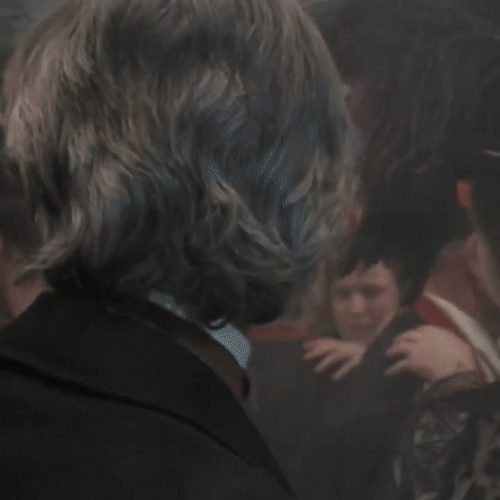

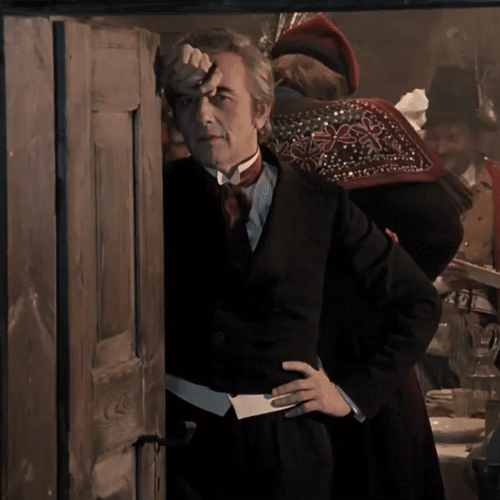

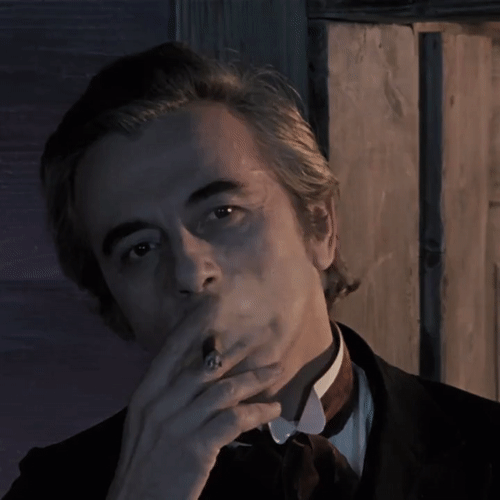
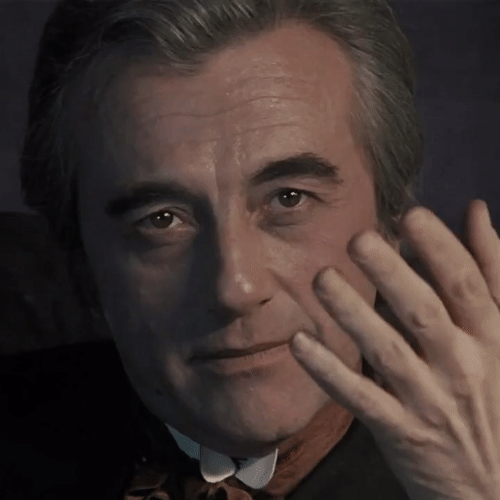


Poeta // Wesele (1973)
#poeta#wesele#stanisław wyspiański#wesele 1973#andrzej wajda#kazimierz przerwa-tetmajer#młoda polska#polska literatura#pollit#widzę ładnych panów to robię gify#coping mechanism#polski film#polskifilm
150 notes
·
View notes
Text



5 notes
·
View notes
Text


zobaczyłam komentarz @arcywapierz do mojego postu o Poecie z Wesela, że nadaje się na jakiegoś wampira i pamiętam, że jak oglądałam film, to dosłownie na tym momencie zaśmiałam się, że goofy Dracula
#wesele#wesele 1973#poeta#smol#stanisław wyspiański#polska literatura#młoda polska#pollit#skoro wampiry są hot to ten by się nadawał#poza tym sory nie ogarniam tumblra#nie wiem co tu się dzieje#chciałam tylko wrzucić parę gifów i przemyśleń literaturowo filmowych
58 notes
·
View notes
